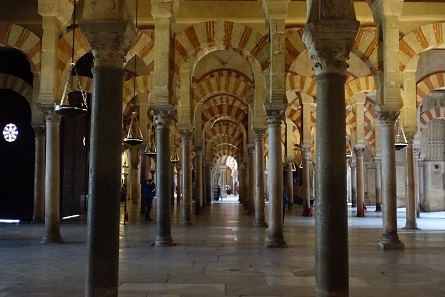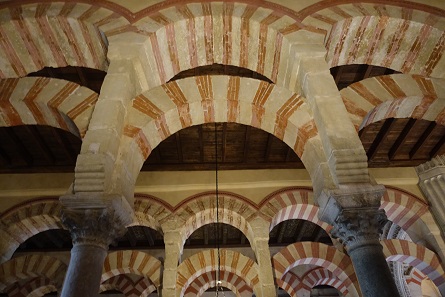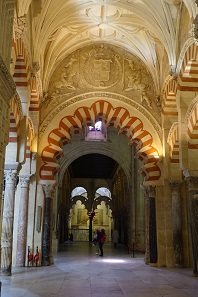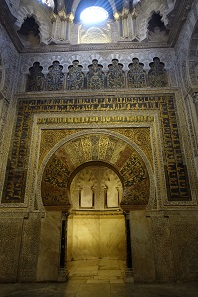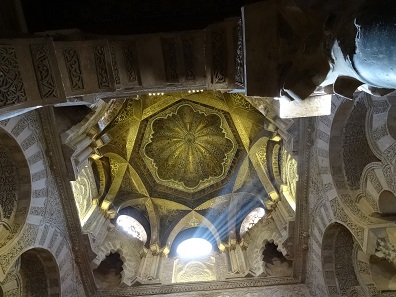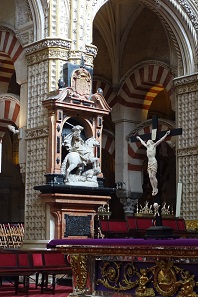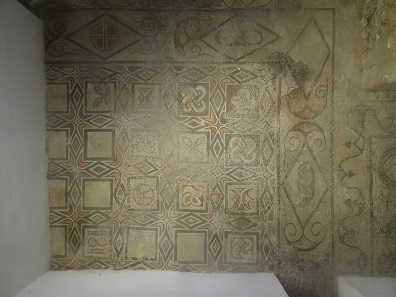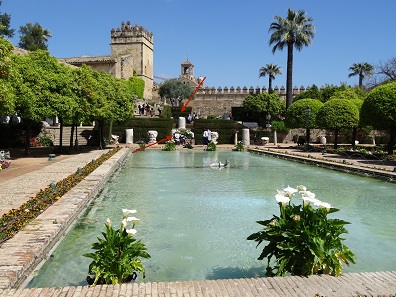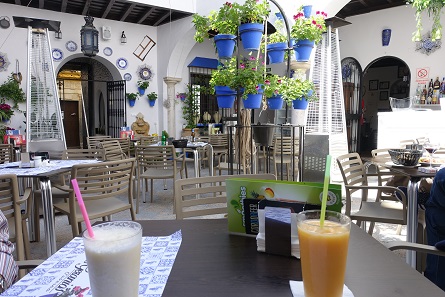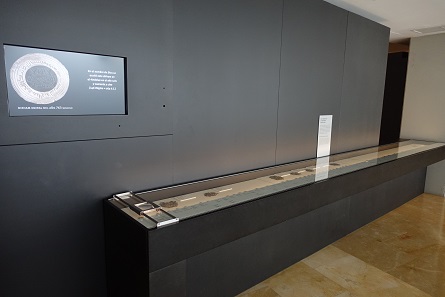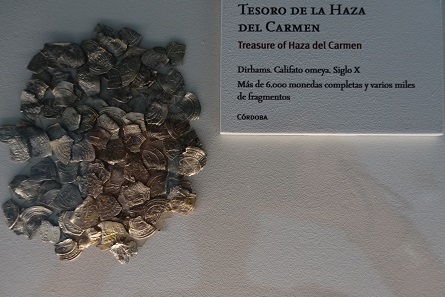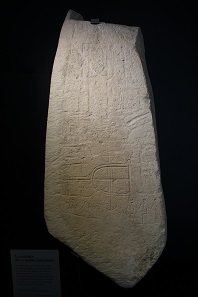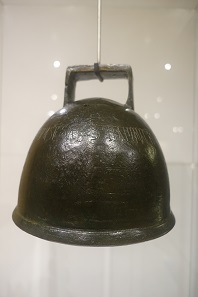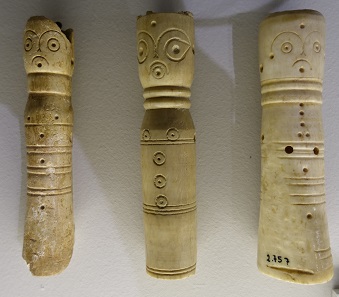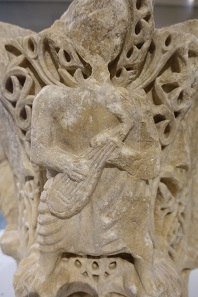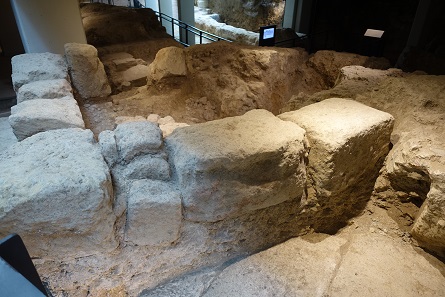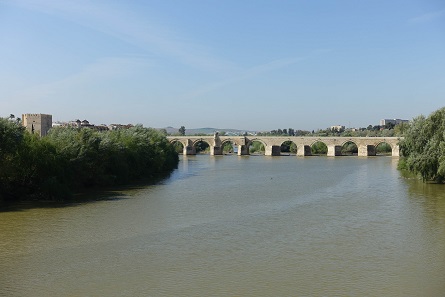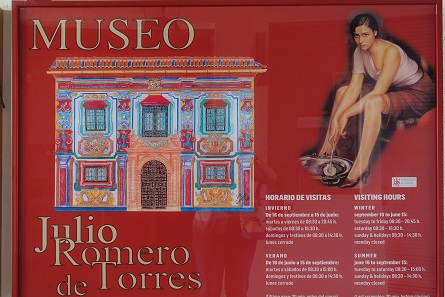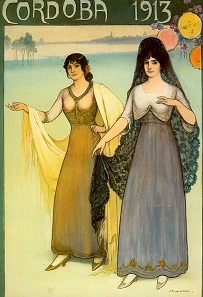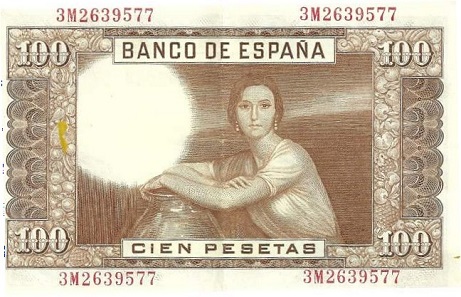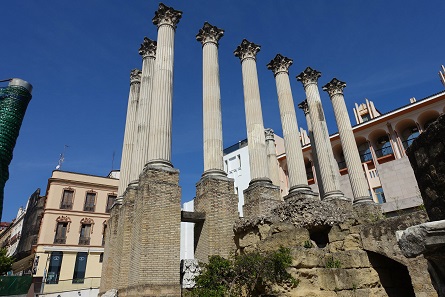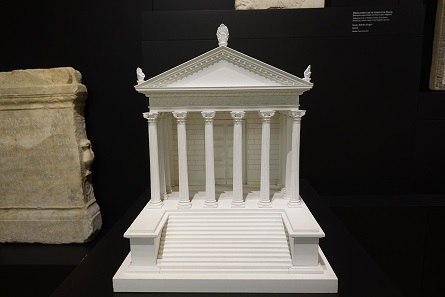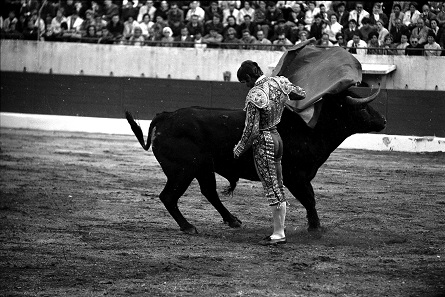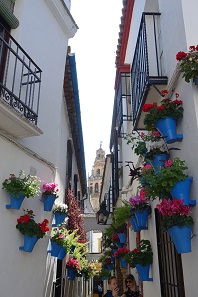by Ursula Kampmann
translated by Almuth Klingner
September 6, 2018 – When you’re traveling, do you consider yourself the lonely explorer, too? The only thing slightly ruining this wonderful feeling is the presence of all the other tourists acting like they’re alone on earth. On our journey through Southern Spain, we have now reached Andalusia, the country’s most tourist-frequented area. As regards visitors, Andalusia beats all other provinces including Madrid by more than twice the number. In figures: Each year, over 2.5 million people visit Sevilla, over 1.8 million Granada, and no fewer than 990.000 Córdoba.
Don’t even believe for a second you could experience the Mezquita this empty: We waited for over half an hour during lunchtime for a moment without anybody walking through the picture. Photo: KW.
The problem of those crowds of people is the fact that, unlike in other tourist hotspots like London or Rome, they don’t spread out over the entire city. No, every single tourist wants to see one specific attraction: the Mosque-Cathedral (Mezquita) in Córdoba, the Tomb of Columbus in Seville, the Alhambra in Granada.
So, let’s get going. Join us on our lonely path through the tourist masses of Córdoba.
In the cityscape of Córdoba, the Mezquita is rather inconspicuous. Photo: KW.
Tuesday, March 28, 2017
Despite the most beautiful weather, we weren’t really in a good mood. Perhaps because we didn’t sleep well. The neighborhood had turned out to be quite noisy, even though we were staying far away from the city center. Either people were expecting a lot of burglars, or Córdoba has a love for barking mutts thus far unknown to me. Well, upon entering the breakfast hall in the morning, we saw gigantic pictures of dogs hanging everywhere …
Always a safe direction for taking tourist-free pictures: the look upwards. Don’t be surprised if this view is featured remarkably often throughout this article. Photo: KW.
By taxi, we started towards the city center. If you think you could visit the Mezquita in peace, forget about that daydream. Even in pre-season, the Mosque-Cathedral is filled to the brims with tour groups. There is one trick, though: Wait until lunchtime. For that is when touristus communis is being led to the manger by their tour guide. In other words: For a little while, the tourist masses are reduced.
A favorite selfie spot, empty for at least 2 seconds. Photo: KW.
However, we did not quite succeed with the tried-and-tested timing today. When we entered the Mezquita a little before noon, it was still so packed that it was impossible to take a picture without tourists. (Unless you photographed looking upwards.) Selfies were being taken everywhere. In series. A favorite spot was a colorful speck of light created by a glass window. I waited for an eternity in order to take a picture of it without people. In vain. I only succeeded to do so much later. While I was waiting, constantly changing couples were taking varying pictures together: kissing, jumping up, jumping up kissing, jumping up individually (currently very popular with Japanese women).
The qibla wall, decorated with mosaics. Photo: KW.
With all those selfies, one might almost forget how amazing the Mezquita is. This incredible forest of columns, crowned by the famous red-and-white stone arches. In addition, here and there some specially decorated entry- and passageways. The qibla wall with its splendid gold mosaic is particularly stunning.
Incredibly magnificent: the look upwards. Photo: KW.
The Byzantine emperor supposedly not only commissioned the craftsmen upon the builder’s demand, but also gave them thousands of small tesserae as gifts.
Under the sign of the cross, Santiago slays the Moors. What was that thing about Christian charity again? Photo: KW.
Along the same lines, the cathedral built in the middle of the hypostyle hall hits you like a slap in the face. As soon as during the Renaissance, people noticed what had been destroyed with this. Not without reason, rumor has it that the inexperienced Charles V was practically tricked into giving the permission for the construction of a church. He himself is said to have been shocked when he saw for the first time the beauty that had had to make way for the Christian church.
Original mosaic from the Visigoth cathedral. Photo: KW.
By the way, before the Mosque, there was already a Roman temple and after that a Visigoth cathedral, dedicated to Saint Vincent of Zaragoza, on this site. The latter is said to have been the only church that was preserved during the Islamic Conquest in the 8th century. Both religious groups supposedly shared it for their worship services. Only by the time the Mezquita was in planning, Abd al-Rahman purchased the Christian entitlement. Whether this is true or just a legend to illustrate the peaceful coexistence of religions in Andalusia before the Reconquista, nobody knows.
Either way, we took our time visiting the Mezquita, especially since it got emptier by the minute and, at some point, there was actually something like a devout mood!
A look into the courtyard of the Alcázar. Photo: KW.
Our next path led us – after we got ourselves a city map from the tourist information with which one could get perfectly lost – to the Alcázar de los Reyes Cristianos. Well, the building is quite nice, but certainly nothing special. The only surprise were the high-quality Roman finds that are kept here.
A detail of the 3rd-century sarcophagus. Photo: KW.
We saw a number of large mosaics and an impressive sarcophagus from the 3rd century AD. Yes, the finds suggest that Córdoba was an important Roman center. After all, the not-quite-unknown philosopher Seneca was born here.
The gardens. For the most important selfie spots, see arrows 1 and 2. Photo: KW.
Greatest attraction of the Alcázar aren’t the mosaics, but the gardens, which are truly beautiful when it gets really hot. The gardens feature huge fishponds, small fountains, white lilies, colorful flowerbeds and an impressive area for field studies if you are interested in the self-portrait of the average postmodern tourist.
You wouldn’t believe how many tourists, rushed by their guide, looked at us with envy in our quiet spot in the Taberna Los Geranios. Photo: KW.
We decided to get something to eat in the Jewish Quarter. After some wrong turns, we found the perfect spot: the aptly named Taberna Los Geranios, in a beautiful inner courtyard decorated with dozens of geranium pots. The food was splendid and the refreshment needed – after all, the Archeological Museum was waiting for us.
The large showcase with coins is positioned before of the actual entrance to the exhibition. Photo: KW.
Despite the misleading city map, we found it and spent more than one stimulating hour in there. No wonder: Numismatics plays an important role! An entire showcase with samples from the area’s best-known hoards was on display.
Coins from several treasure finds – from Roman times up until the 12th century – are on display. Photo: KW.
A short film was shown, explaining the Islamic dinars and dirhams. And that was only the beginning.
Stele of Ategua. Photo: KW.
In a brand-new exhibition, finds from the area around Córdoba from the Stone Age until the Christian reconquest were presented. And that included tons of spectacular items!!!
For example, the Stele of Ategua with a Neolithic depiction of a horse-drawn carriage. And that was far from being all.
Bronze letters of a monument inscription from the 3rd century AD. Photo: KW.
Mozarabic bell. Photo: KW.
Chess pieces from the 10th century AD. Photo: KW.
A capital with depictions of Arab musicians, also from the 10th century AD. Photo: KW.
What happens to marble statues when nobody cares about them. Photo: KW.
On the lowest level, there was an original excavation. It seems to be customary in Spain to build the museum right in the spot where something was found anyway. In this case, it was the old theater.
Built in there was a significantly younger limekiln – highly interesting for anyone having to do with cultural heritage – which used to serve the purpose of putting Roman marble statues to practical use, i.e. to burn limestone. I would think that politicians should be aware of the fact that most Roman statues are missing in museums not because of the bad, bad collectors, but because the locals had a far better use for the old stuff …
I have a bad habit: Whenever I leave a museum, I look in the bookstore to see if there are any numismatic books which I desperately need for my little library. I was not expecting to find anything in Córdoba. How I was mistaken! Several books on the local finds were on display. However, the ladies behind the counter got quite uncomfortable when I made the strange request to purchase said books. No, those were not for sale. And they wouldn’t know how much they would cost and where one could order them, either. Lesson learned: A numismatic work on display in a bookstore of a Spanish museum by no means implies that the museum directors are willing to sell it.
Maimonides. Photo: KW.
Technically, that would have been enough for the day. We were tired, our feet hurt, but we were determined to find the statue of Maimonides. Where would you look for a statue that isn’t marked in the city map? Our guess was the square of the same name. Wrong. We kept looking. First, we found the statue of a Jewish ophthalmologist, then that of Averroes; Maimonides though hid stubbornly. We did not find him until we were already on our way back. That is to say, we found an accumulation of what seemed like 80 tourists, all taking selfies. Behind them, the object of our search was hiding.
After that, we had enough and let ourselves by chauffeured home to the Parador.
Wednesday, March 29, 2017
Today, we actually wanted to go to Medina Azahara, the ruins of a palace from the Umayyad era. The taxi had already been ordered when a fellow tourist was so nice to point out that there was nothing to see, since everything was being restored. We quickly changed plans and went into the center of Córdoba once more.
My favorite place as far as the Roman bridge is concerned: so far away that you don’t see the crowds of people. Photo: KW.
We had a tremendous success! As shocked as we had been yesterday upon seeing the masses of visitors piling into the Mezquita, that was nothing compared to what we saw today: Innumerable school classes and tourist groups, mixed with the occasional individual traveler, were pushing and being pushed towards the entrance. Hah, without us. We had already crossed that off the list yesterday. The Roman bridge, too, was black with people. Therefore, we passed it and went to the next bridge over the Guadalquivir, from where the view of the Roman bridge was much better anyway.
The Museo Julio Romero de Torres. A must-see especially for lovers of Spanish banknotes! Photo: KW.
We strolled around the edge of the city center for a while, and suddenly found ourselves in front of the Museo Julio Romero de Torres. Don’t feel bad if you don’t know this painter. I had never heard of him before coming to Córdoba, either.
A poster attracting tourists to Córdoba even before World War I.
You cannot take a single step there without stumbling over his little coal girl (see museum poster). Without a doubt, Julio Romero (1874-1930) liked the ladies and everything we consider typically Spanish today: flamenco, bullfighting, sanctimony, and, again and again, women with dark eyes, mantillas, and preferably as close to topless as possible. (I don’t even dare to show his painting Naranjas y limones here, or else American Google is done with me!)
The old 100-pesetas bill from 1953 bearing the painter‘s portrait.
His fans like to see the social criticism in his paintings. Well, it probably already counts as criticism that, apart from all the highly commendable dignitaries, Romero actually painted members of the lower class. His beauties used to and still advertise today all kinds of products, like wine, alcohol, sweets and Córdoba itself. In the middle of the 20th century, Romero was so famous in Spain that the 100-pesetas bill from 1953 bears his portrait on the front and one of his girls on the back.
The foal fountain, already described in Cervantes’ Don Quixote. Photo: KW.
By the way, this is not the only attraction in this relatively quiet part of Córdoba. The foal fountain, where the cattle market used to take place, was already mentioned by Cervantes in his Don Quixote!
The remains of the Roman Temple and its reconstruction in the Archeological Museum. Photo: KW.
We strolled further, visited the marginal remains of a Roman temple, drank some fresh orange juice somewhere, and ended up in the Bullfighting Museum.
Julián López Escobar was the world’s highest-paid bullfighter at only 17. It was his unconventional fighting style that made him famous. Photo: KW.
These days, little is more controversial in Spain than bullfighting. Most recently, that could be seen in 2016, when 29-year old torero Victor Barrio was hit in the heart by a bull’s horn and died. The comments on the internet were inhuman and showed an impressive indifference towards the surviving relatives. Calling the deceased a psychopath and idiot whose death was his own fault was the very least.
Oh, sacred logic! Approving of bullfighting is no longer socially acceptable nowadays. But taking part in the San Fermin festival in Pamplona has cult status. Hundreds of young men demonstrate their courage by running away from a group of bulls. Although people are injured and killed there every year, nobody thinks of saving the poor lunatics from themselves who need this thrill to feel like a man.
El Cordobés on May 8, 1966. Photo: cc by-sa 4.0. Archives municipales de Toulouse 53Fi453.
What a change of mentality, when you think about how, half a century ago, El Cordobés won the hearts of the whole world! Back then, every little boy wanted to become a torero, and in Córdoba, a school was founded precisely for that. Great artists like Hemingway or Picasso glamorized the fight of the lonely torero against the mighty bull. And the tragic death of Manolete in 1947 could be used by Franco to suggest the ideal of self-sacrifice to an entire country.
Mind you, this is not about right or wrong. I do not want to enter the discussion whether it is more humane to ship a pig through half of Europe after a few months of cattle housing, in order to turn it from living being into sausage at the lowest possible cost. Of course, a bull specifically bred for fighting has a wonderful life compared to what the average boiling meat provider has to endure …
What strikes me as particularly interesting is simply the fact that, 50 years ago, every intellectual was fascinated by the spectacle around a bull’s death, whereas today, it is equally self-evident for everyone considering themselves educated to turn up their nose in disgust. Does that remind you of something? Didn’t we experience a mentality change just like that in collecting? Talk about eternal values.
If you want to take a tourist-free picture, you should be there before 6 a.m. Photo: KW.
After the Bullfighting Museum, we strolled through the narrow alleyways of the Jewish Quarter. We ate (too much), searched and found the Calleja de las Flores, one of Córdoba’s most popular photo motifs. The little alley is decorated with dozens of blue geranium pots which, viewed from the right angle, beautifully frame the Mezquita’s minaret. Now, if you want to take an old-fashioned picture and not a selfie, you need patience. Tourist group after tourist group is being herded by. And by the time you got yourself, the minaret and the geraniums in the right position, the next one comes and destroys the illusion of being alone in Córdoba!
After all: While looking for a taxi to take us home, we made the comforting discovery that there was still a stream of tourists pouring into the Mezquita. It is quite a nice feeling to get the impression of having picked the best time for a visit!
You can find all episodes of the numismatic travelog “To Spain!” here.





